The need for art in unstable times: the round table Art and its Factor of Influence
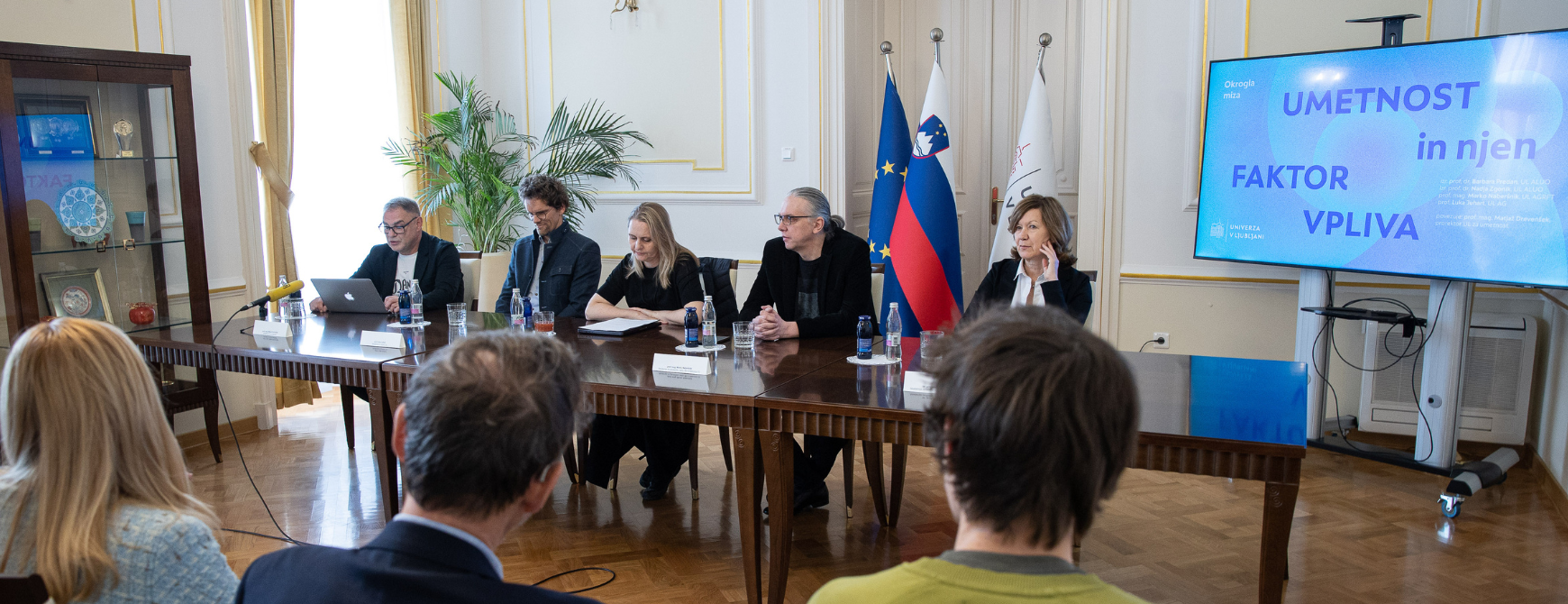
Katja Kodba/STA
Date of publication:
On the opening of an exhibition of works from the UL ALUO collection Student Graphics by representatives of the Ljubljana graphic art school, Tinca Stegovec, Adriana Maraž, Metka Krašovec and Zora Stančič in the UL Gallery, the University held a round table on the role of the University in preserving museum cultural heritage and the development of modern art, entitled Art and its Factor of Influence. Participants debated how to archive the artistic memory and how to link the past with the future, and what art means in the context of new distribution channels. The round table was moderated by the UL Vice Rector for Art, Prof. Matjaž Drevenšek.
Assoc. Prof. Dr Nadja Zgonik of the Academy of Fine Art and Design (UL ALUO) started off by explaining that in seeking a title for the round table, those involved were playing with words. “The entire higher education community is dealing with the factor of influence, but we wanted to draw attention to the fact that art is the thing that extends from the academic to the wider social sphere and helps to shape it. Here we are asking ourselves to what extent is UL aware of this mission. The fact is that in the area of art, many of us feel that we are not understood, since the evaluation of our work is hard to compare with the evaluation of those representing medicine or the natural sciences, where the effects are more easily measurable and the results produce points more quickly.”
Here Assoc. Prof. Dr Barbara Predan of UL ALUO noted the need for the administrative process of habilitation to take into account the complete working of researchers in the field of art. “Each overview monograph exhibition is backed by years of research, which then can become part of some bigger exhibition, such as the Venice Biennale, which can be seen by a huge amount of people. But in the end all this will yield merely 5 academic points, because it does not involve scientific work. UL still has a lot of scope here, and it is our responsibility to draw attention to this, and it is for UL to change the system.”
On the issue of the social impact of artistic works, Prof. Marko Naberšnik of the Academy of Theatre, Radio, Film and Television (UL AGRFT) dwelt on the dilemma of the distribution of audiovisual works. The UL AGRFT facilities offer superlative equipment, in particular a new cinema, but for students the goal is not to broadcast their works in the halls of the University but to present them in the media and at festivals. In his opinion the problem is not in how the University operates, but in the transfer of works to society and the evaluation of the effect: “The point is that art does not promote comfort or enjoyment – foreign media no longer offer the tab art, but rather entertainment and fun, and it is only those who get some audience response that come to prominence.”
Prof. Luka Juhart of the Academy of Music (UL AG) highlighted the problematic nature of the discourse over art being generated in society. “It seems that prominence is being given to artistic achievements that are taken out of context. I am personally affected at the thought of all our colleagues who have devoted their lives to art, they work hard and are upstanding citizens, and attain outstanding achievements on a world scale. All the University member faculties should take a position regarding this topical issue, and support art as something that enriches our society, and without which we cannot imagine our existence in this country and in the world.” He also reminded participants that following the example of student sports involvement being rewarded, their artistic production should also be rewarded. Other speakers agreed with him and added that it would make sense to include creativity more in the educational process at the University.
The round table participants agreed that a major change had been brought about by the revised Scientific and Research Activity Act, which distinguishes between programme and development funds that promote larger interdisciplinary teams and introduce the principles of project leadership. Assoc. Prof. Dr Predan and Assoc. Prof. Dr Zgonik noted in the light of the exhibition and monograph that they are the result of a large and diverse group of employees and students at UL. Prof. Predan underlined that in recent years this was just one of the outstanding projects at UL level that demonstrated the significance in practice of good leadership and the inclusion of different professional profiles in one project.
The round table was also attended by the Minister of Culture, Dr Asta Vrečko, who noted that the discipline in cultural and artistic work is similar to the discipline in sports, since the top results are generated by hard work starting in youth. She underlined that this is a professional path, and that the results depend on a dignified life and salary; if you are dealing exclusively with survival, you can’t pursue art. The times are perhaps not the best for art, but for this reason art is all the more essential, she concluded.
Art and its Factor of Influence was the first of a series of round tables with which the University of Ljubljana seeks to promote wider consideration of the place of art within the University and Slovenian society, and to highlight key challenges and opportunities for further development.
-
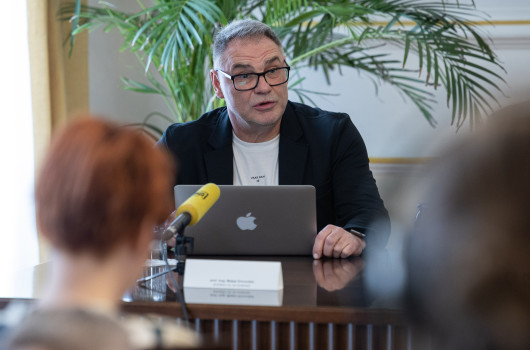
prof. mag. Matjaž Drevenšek, prorektor UL za umetnost
Author: Katja Kodba/STA
-
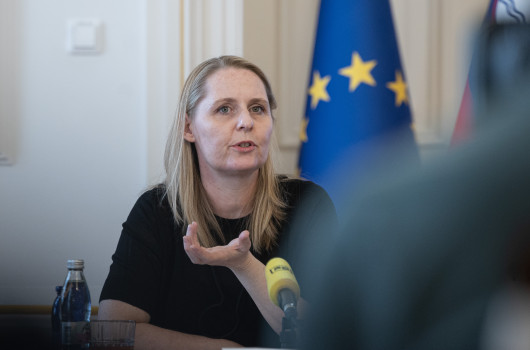
izr. prof. dr. Barbara Predan
Author: Katja Kodba/STA
-
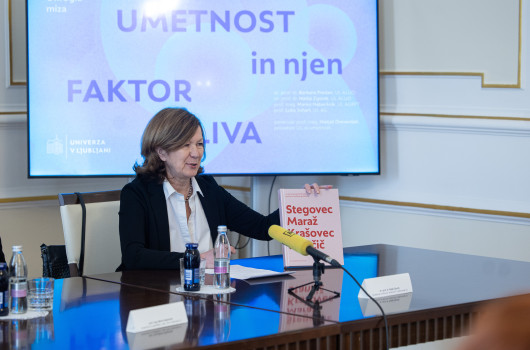
izr. prof. dr. Nadja Zgonik
Author: Katja Kodba/STA
-

prof. mag. Marko Naberšnik
Author: Katja Kodba/STA
-
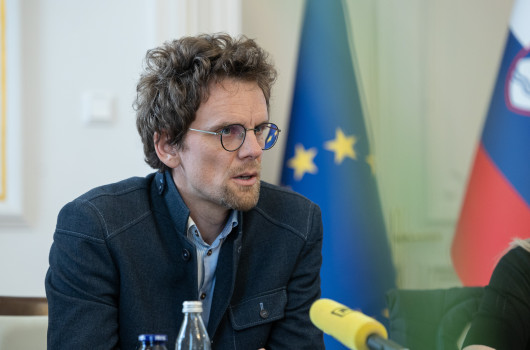
prof. Luka Juhart
Author: Katja Kodba/STA
-
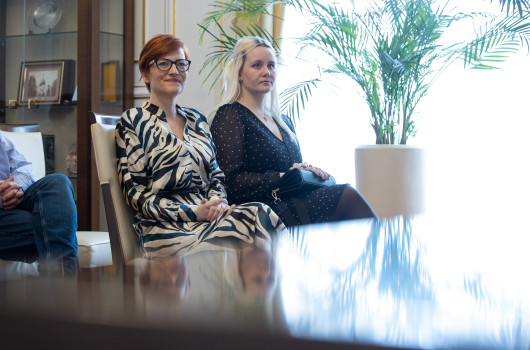
dr. Asta Vrečko, ministrica za kulturo
